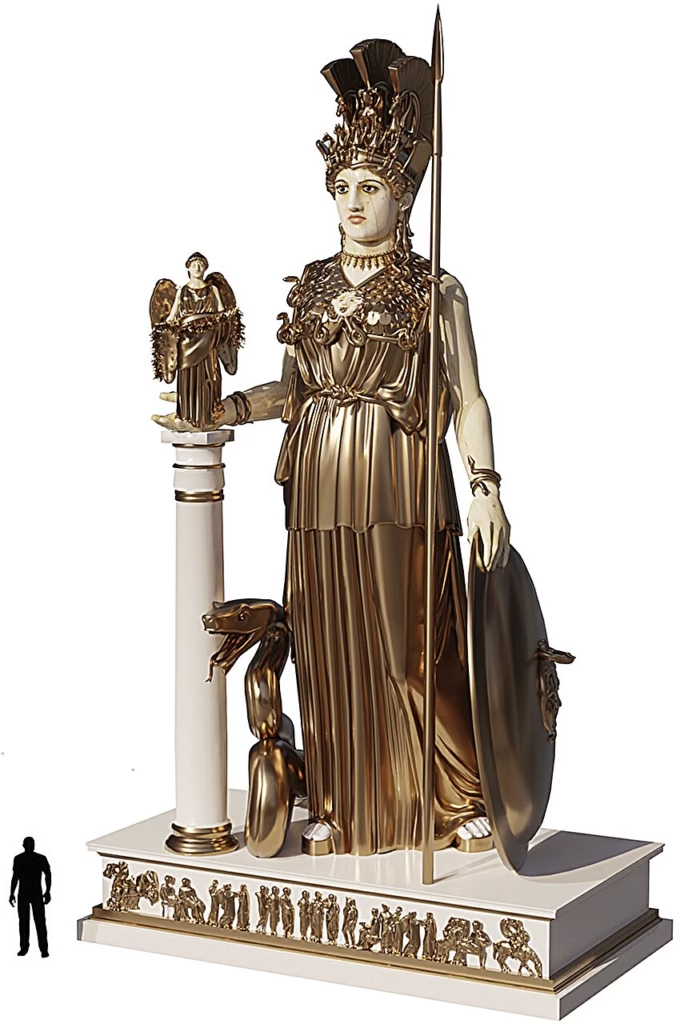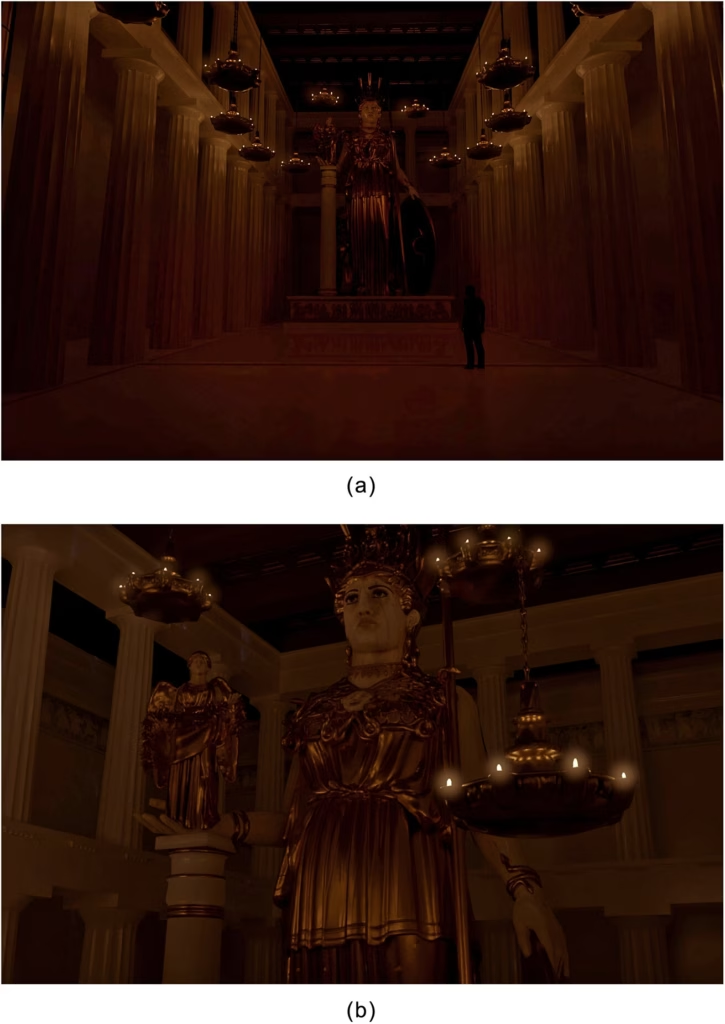A groundbreaking study using 3D modeling and light simulation technology has shed new light—quite literally—on the interior illumination of the Parthenon, one of ancient Athens’ most iconic monuments. The findings challenge long-held assumptions about how light interacted with the temple’s sacred space.
Located atop the Acropolis and dedicated to Athena, the goddess of wisdom and protector of Athens, the Parthenon has captivated scholars for centuries. Beyond its classical architecture, the temple once housed a monumental 40-foot gold and ivory statue of the goddess, raising questions about how such a figure was meant to be seen in what was presumed to be a sunlit interior.
A Dimly Lit Interior, Not a Sun-Soaked Hall
Led by archaeologist Juan de Lara of Oxford University, the study—published in the Annual of the British School at Athens—relied on four years of meticulous reconstruction using archaeological data, advanced 3D digital modeling, and physical-based rendering (PBR) simulations.

Contrary to previous theories that envisioned a bright, marble-filled hall drenched in sunlight, the research revealed that the Parthenon’s interior was mostly dim and shadowy. Sunlight only briefly illuminated the lower part of the statue at dawn on select days of the year—never fully bathing the figure in light.
Architecture Designed with Light in Mind
The study indicates that every aspect of the Parthenon’s architectural design was crafted with lighting effects in mind. From its alignment with the sunrise to translucent marble ceilings, carefully placed openings, and reflective pools of liquid, each feature appears to have contributed to a deliberate sensory experience for ancient visitors.

Interestingly, the reflective pools—once thought to enhance interior brightness—had minimal effect on illumination and were more likely used for humidity control or ritual purposes.
Shadow as Sacred: Enhancing Spiritual Awe
De Lara’s findings suggest that the temple’s low lighting wasn’t a flaw, but a conscious design choice intended to heighten the spiritual and emotional impact of the space. The interplay of light and shadow likely intensified the sense of awe, mystery, and reverence associated with Athena’s statue and the temple itself.
Cover Image Credit: Unsplash/CC0 Public Domain
Juan de Lara, ILLUMINATING THE PARTHENON, The Annual of the British School at Athens (2025).





